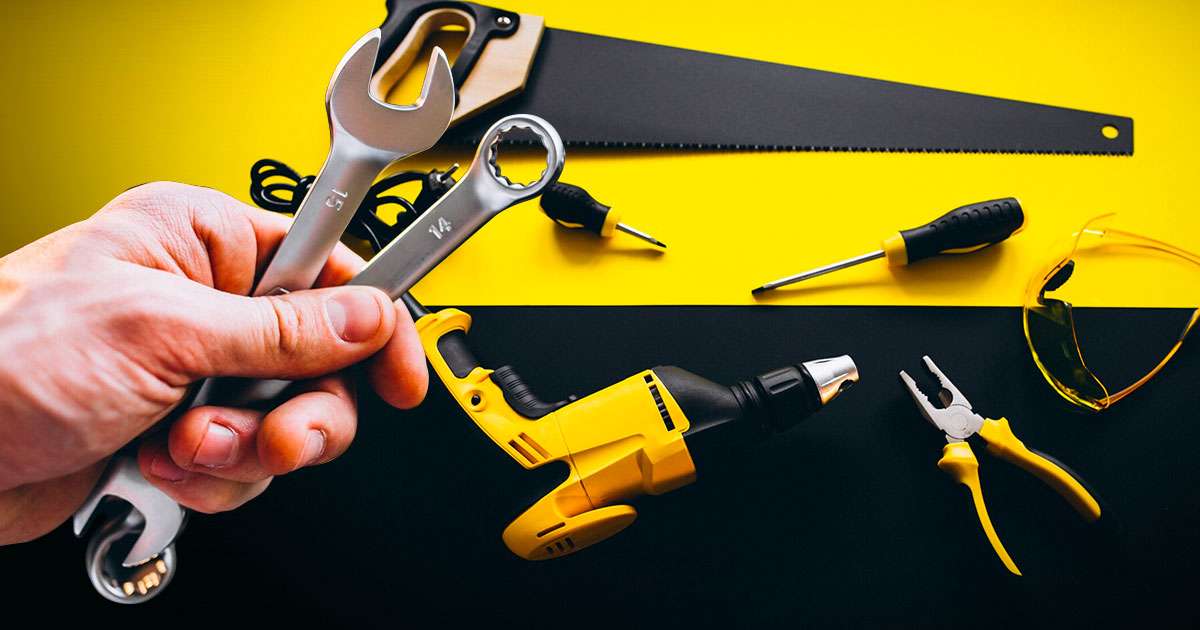Tips to Cleaning and Maintaining Hand and Power Tools

Hand and power tools are super important for anyone who loves fixing things or doing DIY projects. But do you know how to clean them? Let’s find out the best ways to clean and take care of your tools so they stay in good shape and work well for a long time.
Why do you need to maintain your tools properly?
Taking care of your hands and power tools is super important. It’s not just about doing the right thing; it’s about keeping things safe and getting the job done well. If you don’t look after your tools, it can cause big problems. It might make your work less good, and it could even be dangerous for you and the people working with you.
Staying safe while using tools is super important. If you don’t take care of your tools, they can become dangerous. For example, imagine you’re using a saw with a rusty blade because you haven’t looked after it properly. As you’re cutting, the blade gets stuck on some wood and suddenly kicks back. This could happen because the blade is dull and not working right anymore. And if you’re using a power drill that’s broken with wires poking out or switches that don’t work, it could start a fire, which is scary for everyone around.
If you don’t take care of your tools, they won’t last as long. Just like cars need regular oil changes, tools need maintenance too. If you ignore cleaning, oiling, and checking your tools, small problems can turn into big ones. For instance, if you let sawdust build up inside a circular saw, it could make the motor get too hot and stop working properly. And if you don’t replace old parts in a power drill, it could ruin the whole drill.
In the end, not taking care of your tools costs you a lot. It’s not just about safety; it’s also about wasting time and money. When your tools don’t work well, you can’t get the job done right, and that can lead to problems for everyone involved.
Tips for cleaning hand and power tools
Keeping your hands and power tools clean is easy and super important. It helps them last longer and work better. Here are some simple tips to help you do it right:
Use the right cleaning materials
To clean hand tools, go for gentle but powerful cleaning stuff. Mild soap and water with a soft cloth or brush work great for removing dirt. If there’s stubborn stuff or rust, try sandpaper or steel wool. Just pick the right grit to avoid scratching the tool.
For power tools, you might need a different method. Try using compressed air to blow away dirt from tricky parts, or use a degreaser for oily spots. And don’t forget to stick to what the manufacturer recommends for cleaning and upkeep.
Establish a regular cleaning routine
It’s important to clean your tools regularly, especially after using them in dirty or wet conditions. This helps prevent dirt buildup and lets you catch any damage early. So, make cleaning your tools after each use a part of your routine to keep them in top shape.
Ensure thorough drying
Once you’ve cleaned your tools, make sure they’re completely dry to avoid rust and corrosion. Use a dry towel to wipe them down, focusing on the nooks and crannies. Or, use an air compressor to blow away any leftover moisture.
Lubricate moving parts
To keep hand tools working well, add a bit of lubricant to moving parts like hinges and joints. This helps reduce friction and protects against rust. Pick a lubricant that suits your tool and wipe off any extra to avoid collecting dirt.
Store properly
Storing your tools correctly is super important to keep them safe when you’re not using them. Keep them clean and dry, away from dampness, extreme heat, or cold. You can use toolboxes, racks, or pegboards to keep them tidy and easy to find. Also, use protective cases or covers to shield them from harm when you’re moving them around or storing them away.
Tips to properly maintain your tools
Besides cleaning them regularly, taking care of your tools involves a few important steps to keep them working well:
Regular inspection
Regularly check your tools for signs of wear, damage, or problems. Look for loose parts, cracks, or dents, and see if blades or edges are dull or chipped. Catching issues early helps avoid more damage and makes your tools last longer.
Sharpen blades
Sharp blades are super important for making clean cuts and getting the job done right. Use the right tools to sharpen them regularly. Whether it’s a chisel, saw blade, or drill bit, keeping them sharp not only makes cutting easier but also keeps you safer.
Replace worn-out parts
As you use your tools, some parts might wear down over time from all that work or tough conditions. It’s smart to replace worn-out parts like blades, bits, or brushes early on to keep your tools working their best. Get good-quality replacement parts to make sure they fit well and last a long time.
Schedule professional repairs
If your tool has big problems you can’t fix, don’t try to use it. It could make things worse and be dangerous. If there’s something wrong with the motor, housing, or electrical parts, get help from professionals who know how to fix it safely.
When should tools be replaced?
Knowing when to replace your tools is essential for safety and efficiency. Consider replacing your tools under the following circumstances:
- Excessive Wear: If a tool shows signs of significant wear and tear that cannot be repaired, it’s time for a replacement.
- Safety Concerns: Tools with compromised safety features or structural integrity should be replaced immediately to avoid accidents.
- Obsolete Technology: As technology evolves, newer tools may have better features and performance. Consider upgrading outdated tools for better efficiency and functionality.
You need to properly maintain power and hand tools
To keep your hands and power tools safe and lasting a long time, follow these tips. Clean them often, check for damage, and fix any problems quickly. Taking care of your tools now will save you money and make your work area safer in the future.

